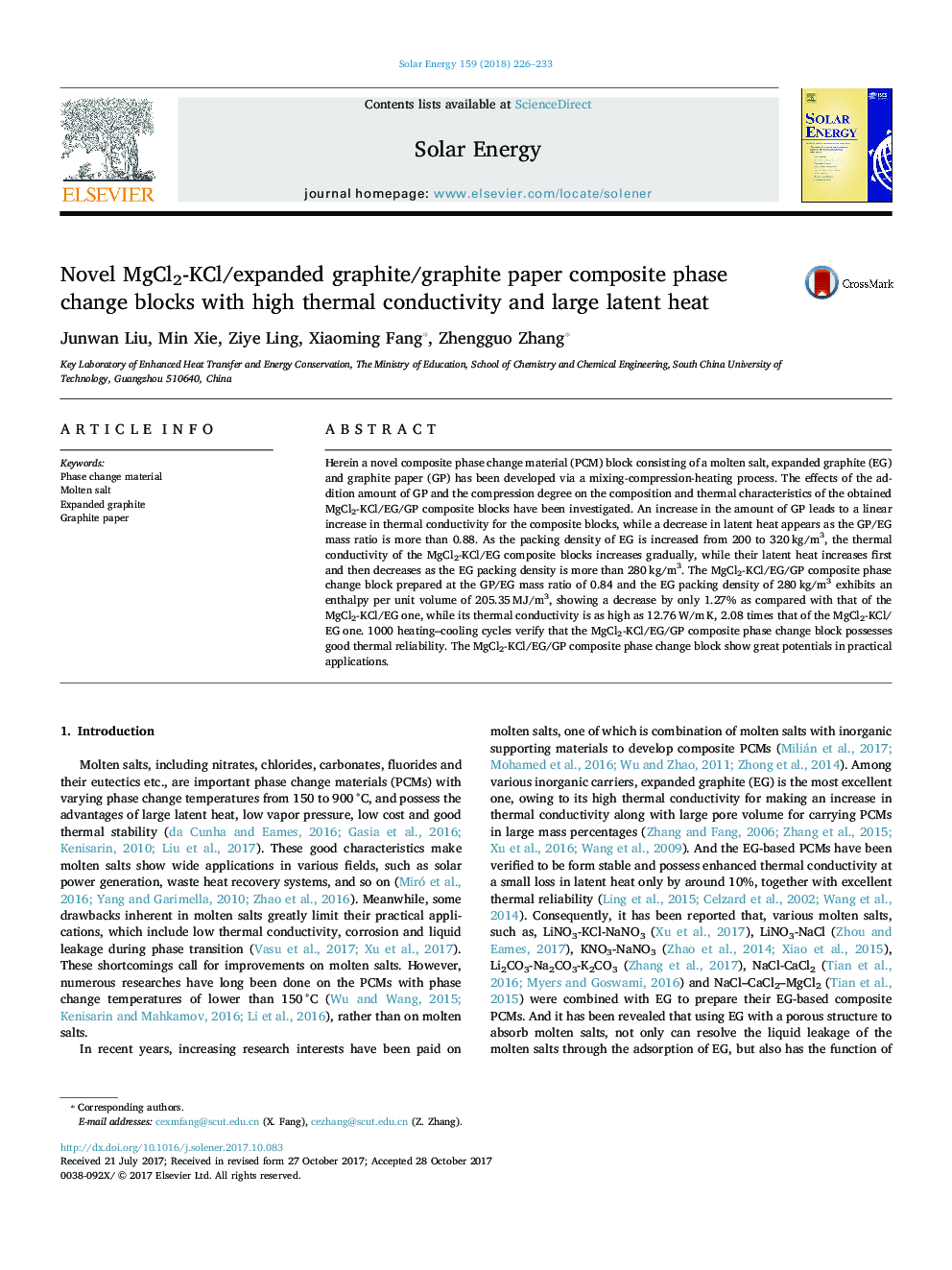| Article ID | Journal | Published Year | Pages | File Type |
|---|---|---|---|---|
| 7935990 | Solar Energy | 2018 | 8 Pages |
Abstract
Herein a novel composite phase change material (PCM) block consisting of a molten salt, expanded graphite (EG) and graphite paper (GP) has been developed via a mixing-compression-heating process. The effects of the addition amount of GP and the compression degree on the composition and thermal characteristics of the obtained MgCl2-KCl/EG/GP composite blocks have been investigated. An increase in the amount of GP leads to a linear increase in thermal conductivity for the composite blocks, while a decrease in latent heat appears as the GP/EG mass ratio is more than 0.88. As the packing density of EG is increased from 200 to 320â¯kg/m3, the thermal conductivity of the MgCl2-KCl/EG composite blocks increases gradually, while their latent heat increases first and then decreases as the EG packing density is more than 280â¯kg/m3. The MgCl2-KCl/EG/GP composite phase change block prepared at the GP/EG mass ratio of 0.84 and the EG packing density of 280â¯kg/m3 exhibits an enthalpy per unit volume of 205.35â¯MJ/m3, showing a decrease by only 1.27% as compared with that of the MgCl2-KCl/EG one, while its thermal conductivity is as high as 12.76â¯W/mâ¯K, 2.08 times that of the MgCl2-KCl/EG one. 1000 heating-cooling cycles verify that the MgCl2-KCl/EG/GP composite phase change block possesses good thermal reliability. The MgCl2-KCl/EG/GP composite phase change block show great potentials in practical applications.
Related Topics
Physical Sciences and Engineering
Energy
Renewable Energy, Sustainability and the Environment
Authors
Junwan Liu, Min Xie, Ziye Ling, Xiaoming Fang, Zhengguo Zhang,
